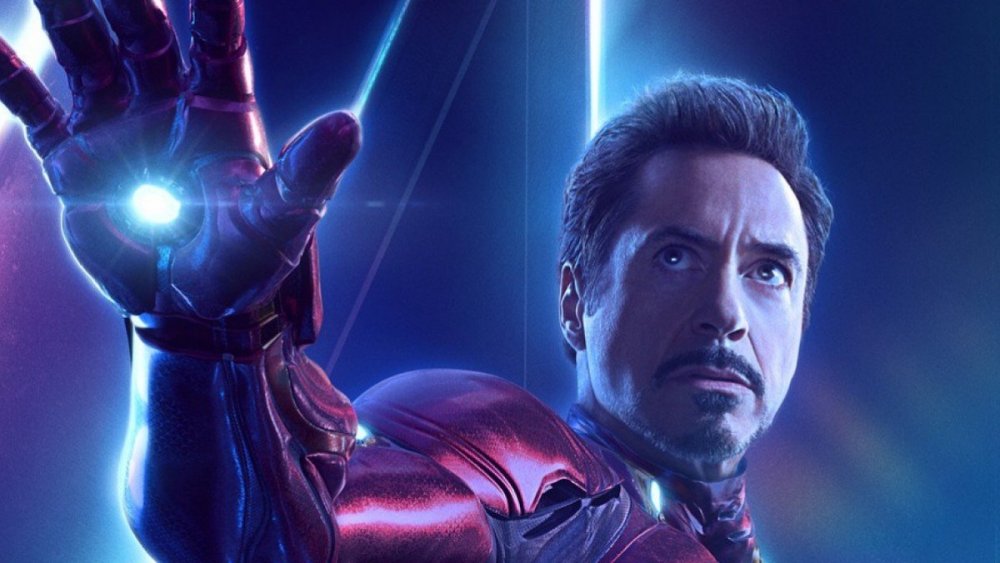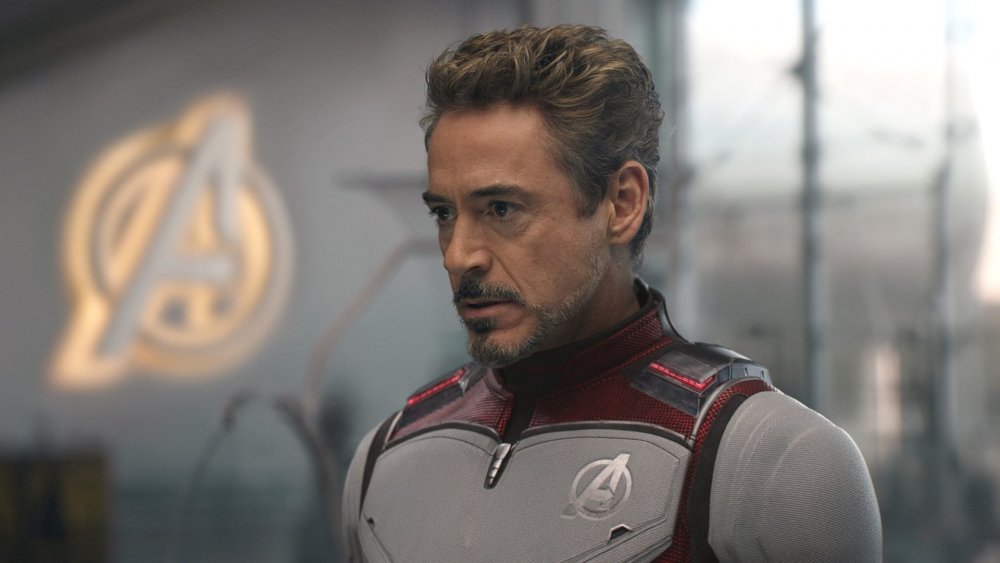Iron Man's Endgame Death Could Have Gone Much Differently
The climax of Avengers: Endgame featured the death of a legend — but as perfectly heroic as the moment was, it could have gone dozens of different ways.
In a recent conversation with Collider, the film's editor Jeff Ford went into depth about how the scene where Tony Stark (Robert Downey, Jr.) sacrifices himself to snap Thanos and his invading army out of existence came to be. It's a fascinating deep dive into the genesis of a scene destined to go down as one of the most memorable in the history of mainstream cinema — and also an interesting and humorous look at Downey's process.
Ford is the longtime editor for Endgame co-directors Joe and Anthony Russo, and he's made himself a Marvel icon with one contribution to the Infinity Saga-culminating film: it was he put Stark's last words into his mouth, when he suggested that the Armored Avenger's retort to Thanos' declaration "I am inevitable!" should mirror the statement he made to the world at the conclusion of the inaugural entry into the Marvel Cinematic Universe: "And I... am Iron Man."
It was perhaps the single greatest moment in the MCU up to this point, but according to Ford, nobody was exactly sure how it should play out when the time came to actually shoot the scene. Since they were working with a gifted actor and brilliant improviser in Downey, the filmmakers basically decided to let him off the chain and see what would happen.
"When we were putting together the end of the movie, when we shot Tony's last moment... we shot a bunch of different options. Robert had different ideas...We give him space to do that," Ford recalled. "Joe and Anthony are great about improv. We shot a run of different performances for that last moment. Some of them were crazy. Some of them we would never have used."
Of course, like everyone else, the interviewer wanted to know more about those crazy, left-field takes that never could have made it into the movie — but Ford declined to get too specific, citing a desire not to "peel back the curtain" on Downey's process too much. But what he did have to say sounds a hundred percent right, and of course, it makes us love Downey even more.
"Some of them were jokes. Some of them were obscenities. Some of them were completely emotional, raw, insane things that he was doing," Ford said. "And then some of them were combinations of all three of those things."
That is so easy to picture from Downey that we're actually perfectly content to let our imaginations run wild. We're sure some of these takes were even crazy enough to have worked, but we're glad that we got the iconic moment that we did — and Ford also had plenty to say about how the final version of the scene was arrived at.
How did the filmmakers arrive at the final version of Iron Man's death in Endgame?
The editor recalled that at some point, it dawned on all involved that they were coming at the problem of what Stark's final words should be from the wrong direction. "What we found as we were cutting the scene wasn't so much that we needed a special last line for Robert, but that we needed a moment between Thanos and Tony. A moment that wasn't some kind of transaction, but literally [Thanos saying] 'this is how I want it to be' and [Stark saying] 'this is how it is.'"
He went on to say that the solution came when they returned to a line that Thanos had already used twice before during the course of the film — one that illustrated the Mad Titan's view of himself and of the conflict, and one that would give the entire film a sense of symmetry with its repetition in the climactic moment.
"The exchange where Thanos says 'I am inevitable' and Tony says 'I am Iron Man', that couplet is what makes that work. When we found Thanos' line, it led us to Tony's line. We found Thanos' line as part of a structure in the script, he says that line three times in the movie. At the beginning, before his head is chopped off, in the middle he hears himself say it again, and then at the end. That symmetry is also why it's interesting, that was a discovery while we were editing."
Did any other versions of Iron Man's Endgame death almost make the cut?
Interestingly, the only other version of the scene that the filmmakers liked nearly as much as the final one didn't involve any alternate versions of the dialogue — rather, it featured no dialogue at all.
"In [one] version, Thanos [and Stark] didn't say anything... [Thanos] had the gauntlet. He looked at him like, 'I got you.' Snapped. Looked. Couldn't believe it. Turned to Tony. Tony raised his hand and snapped. It was beautiful. It worked really, really well."
The filmmakers realized, however, that they had an opportunity to cement the themes of their film and the arcs of the two characters involved in the climactic showdown when they landed on the final exchange. "What we found... was Thanos needed an arc in Endgame," Ford said. "That arc was his sense of inevitability. The story we'd been telling was that Thanos' pitch in that movie is 'no matter how many times you try and stop me, you can travel in time, you can do all these things, you're never going to win.' It's a sense of destiny, of 'I will always be the one who wins.'"
Ford went on to say that by having Thanos invoke that sense of destiny at the crucial moment only to meet his defeat, the filmmakers drove home the true theme of Endgame: that destiny will always land on the side of right. "[The Avengers are] trying to undo destiny," he said. "They're going against what happened. For the movie to have thematic coherence, the end of the movie needed to be Thanos saying, 'I told you. You cannot win,' and for Tony to say, 'But we can.'"
It's interesting to think about how many ways the climax of Endgame could have played out, and if we had gotten a different version, it's just possible that we would be hailing that choice as the only one the filmmakers could possibly have made. But we think pretty much every Marvel fan agrees that the scene we got was utterly perfect — due in no small part to the fact that it's tough to imagine a more fitting parting shot for an actor who completely embodied his character for nine films and 11 years.


